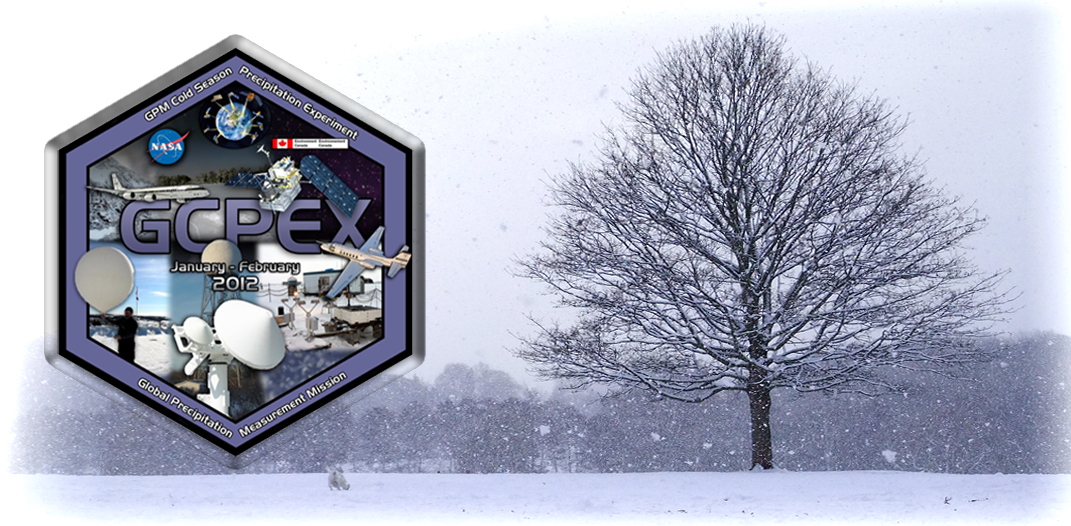GCPEx

Overview
The GPM Cold-season Precipitation Experiment (GCPEx) was conducted in cooperation with Environment Canada in Ontario, Canada from January 17th to February 29th, 2012. The overarching goal of GCPEx was to characterize the ability of multi-frequency active and passive microwave sensors to detect and estimate falling snow through the collection of microphysical property data, associated remote sensing observations, and coordinated model simulations of falling snow. Through collection of these unique datasets, GCPEx's goal is to improve the GPM snowfall retrieval algorithms.
The GCPEx experiment used instrumented aircraft (NASA DC-8, NASA-funded University of North Dakota Cessna Citation, and Canadian National Research Council Convair 580) for flights over heavily-instrumented ground sites located in and around the Environment Centre for Atmospheric Research Experiments (CARE) located in Egbert, Ontario. The DC-8 aircraft flew high above clouds and precipitation with instruments similar to those on the GPM Core satellite. The Citation and C580 aircraft also flew through snowing clouds to measure snowflake properties in situ. Ground-based equipment such as radars and surface particle and snow water equivalent measurement instrumentation connected airborne measurements of snowfall to what was measured at the ground. Data from the experiment will be used to develop and validate snow and frozen precipitation retrieval algorithms used in the generation of data products for GPM, CloudSat and future polar precipitation missions planned by the European Union.
Learn more about GCPEx:
- Scientific Motivation and Goals
- Measuring Frozen Precipitation from Space
- Cloud Resolving Model (CRM) Simulations
- GCPEx Field Site
- Observational Strategy and Instruments

